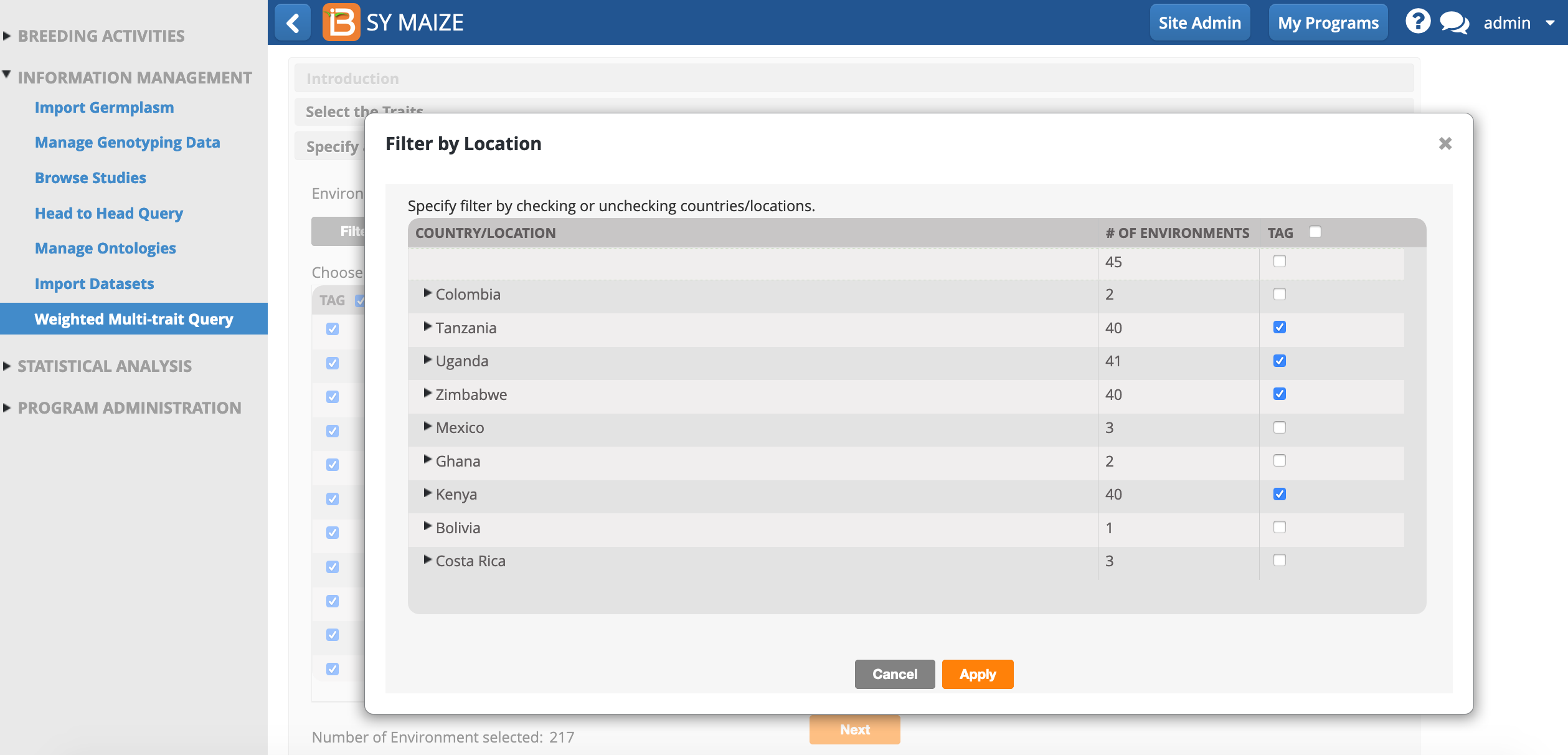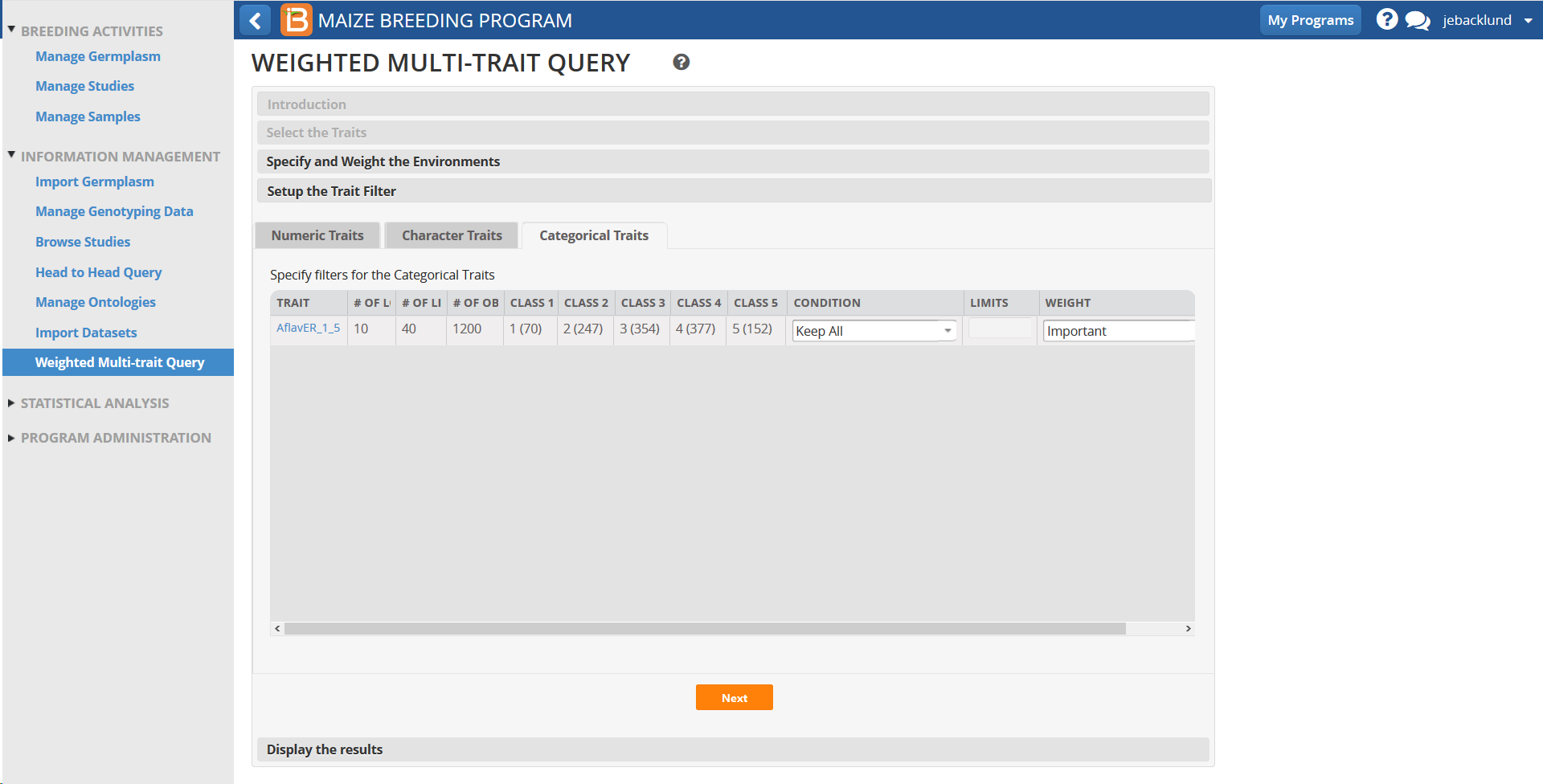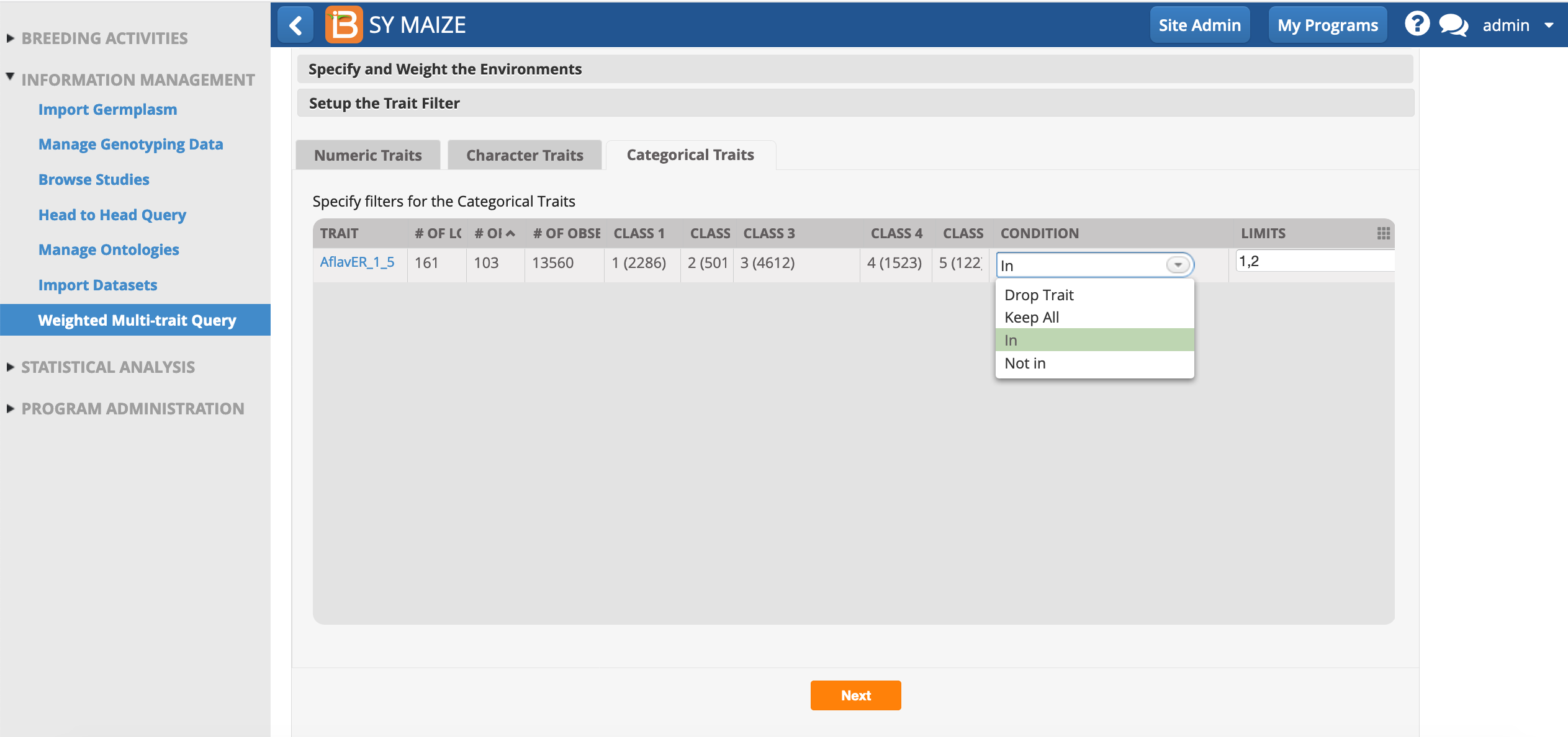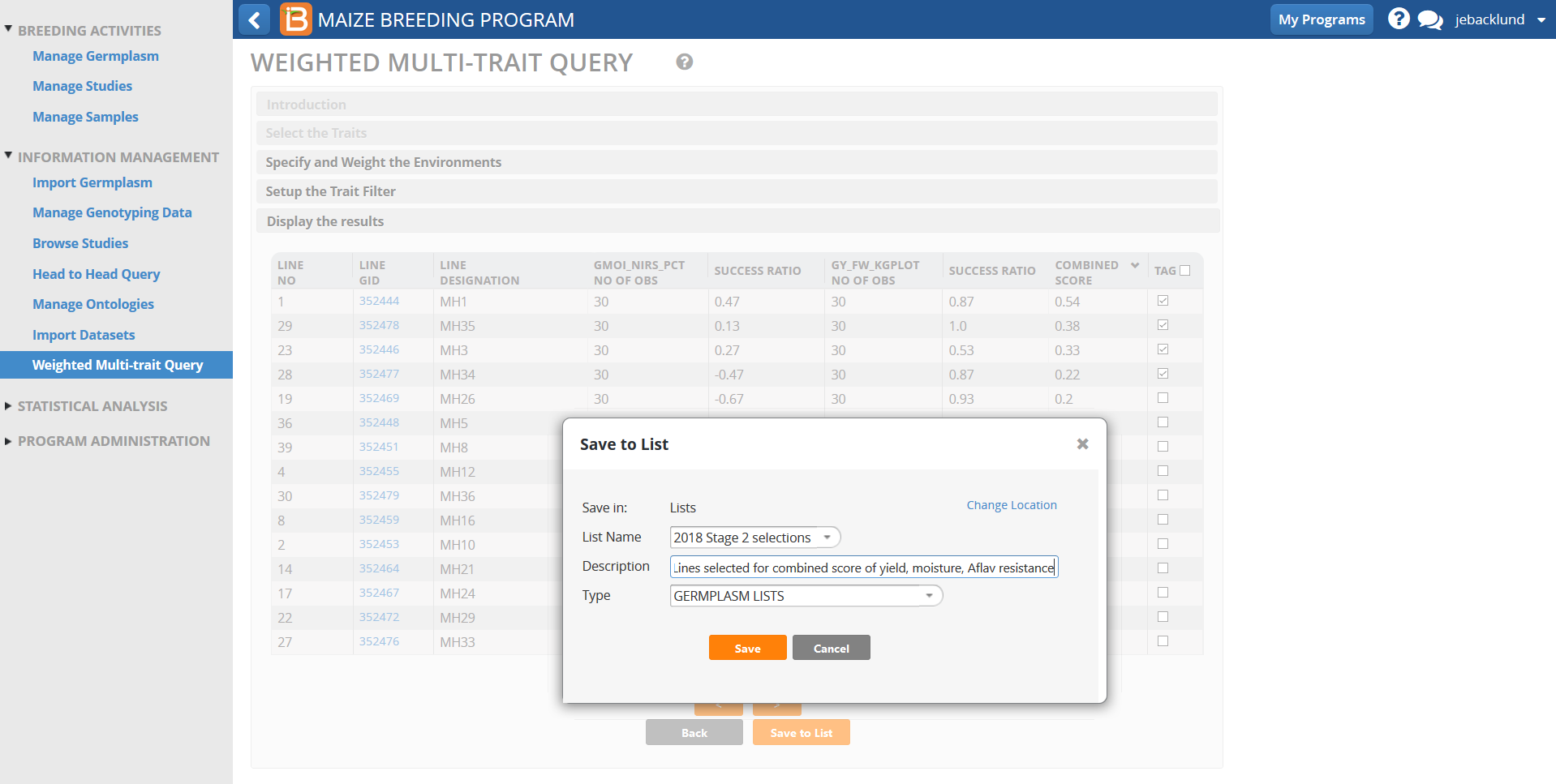About
Query germplasm by phenotype across studies and locations. A 'wizard' style user interface allows the user to:
- Query germplasm by phenotype.
- Filter query results by environment, location, and studies
- Filter query results by phenotypic criteria.
- Create summary scores for germplasm.
- Select and save germplasm.
Select Phenotypic Traits
- Select Weighted Multi-Trait Donor Query from under Information Management. Select Next.

-
All phenotypic traits defined in the ontology are available for selection. Select the phenotypic traits to include in the query.

To facilitate choosing among the available traits, they are organized into a tree starting with major groups such as 'Abiotic stress', 'Agronomic', 'Biotic stress', etc.
Perform Query
- Select Next. The system will search for all of the studies that contain observations for one or more of the traits chosen. Depending on the amount of the data in your database, the query may take several minutes to process.

Three traits are selected; grain moisture (Gmoi_NIRS_pct) , grain yield (GY_FW_kgPlot), and Asperillus flavus ear rot (AflavER_1_5). Grain moisture and yield are numeric variables and Asperillus flavus ear rot is a categorical variable.
Filter Query
Query results can be filtered by both location and study. Additional environmental conditions can be added to the query results to assist filtering. The filters can be applied in any order and the effects are cumulative.
Specify & Weight Environments
- Include or exclude environments from query. Specify the importance of each location by weight: important, critical, desirable, or ignored.

217 environments were evaluated for grain moisture (Gmoi_NIRS_pct) , grain yield (GY_FW_kgPlot), and Asperillus flavus ear rot (AflavER_1_5). In this example, all locations are included and all locations are considered important.
- Filter trial environments by location by selecting Filter by Location and specifying the locations of interest. Apply.

In this example, the locations have been limited to those in Eastern and Southern Africa.
-
Next.

The original 217 environments have been reduced to 161 environments in Eastern and Southern Africa.
Setup Trait Filter
Filter and weight the query results by phenotypic parameters. For each trait, every observation included in the environments filter will be scored as passing or failing to meet the phenotypic criteria for that trait. A combined score across all of the traits is also calculated (see details below). The contribution of the individual traits to the combined score can be weighted as being Critical, Important, or Desirable to reflect its importance.
Numeric Traits
The Numeric Traits tab provides a set of comparison operators for specifying the criteria that will be used to identify germplasm that meets or surpasses the desired levels. To specify criteria between a lower and upper limit, choose 'Between' and enter the two values separated by a dash.
- Specify condition and weights for numeric traits.

The numeric trait, grain moisture has been limited to those germplasm with greater than 20% moisture.
Categorical Traits
- Reduce the column widths to make the selection criteria visible.

- Specify condition and weights for categorical traits. Select Next. Use commas to separate multiple values. To enter a single value, just enter the value with no commas.

Asperillus flavus ear rot (AflavER_1_5) has 5 categories. In this example, the results are restricted to those germplam with Asperillus flavus ear rot scores of highly resistant (1) and resistant (2).
Success ratios are calculated based on whether an observed value of the trait meets the criteria set in the 'Setup the Trait Filter' pane. Observations that meet the criteria are assigned a score of +1 while observations that do not meet the criteria are assigned a value of -1. For example, if the trait of interest is Grain Moisture and the criterion is that the observed value is < 19 then an observed value of 18.9 would be assigned a score of +1 and an observed value of 19.1 would be assigned -1. Each observation is weighted based on the weight assigned in the 'Specify and Weight the Environments' pane. The Choices under the WEIGHT column in the 'Setup and Weight Environments' pane are 'Ignored', 'Desirable', 'Important', and 'Critical' which are assigned weights of 0, 1, 2, and 3, respectively.
A combined score is also provided in the results pane. The combined score is a weighted average of the success ratios of all of the traits included in the query. The weight of each trait is the weight assigned in the 'Setup the Trait Filter' pane. The Choices under the WEIGHT column in the 'Setup the Trait Filter' pane are 'Ignored', 'Desirable', 'Important', and 'Critical' which are assigned weights of 0, 1, 2, and 4, respectively. Note that the number of observations of a trait doesn't factor into the combined score, only the success ratio and the weight assigned to each trait.
Results
The results of the Weighted Multi-trait Query are displayed in a table. Note that there are left and right arrow buttons below the table enabling you to page through the results, which may span multiple pages. Also note that if you have selected multiple traits, they may not all fit on the page; there is a scroll bar just above the left and right arrows for scrolling through the trait columns.

Sorting
Clicking once on a column header will sort in ascending order; clicking again will sort in descending order.
- Click twice on the COMBINED SCORE column and the table to sort results in descending order from highest to lowest.

Four germplasm have combined scores of 1.0 and will be selected for inclusion in an upcoming study.
Tag & Save Germplasm
- Tag germplasm of interest and Save to List.

- Specify the germplasm list details and Save. The germplasm list now available from Manage Germplasm and can be included as a study list.



